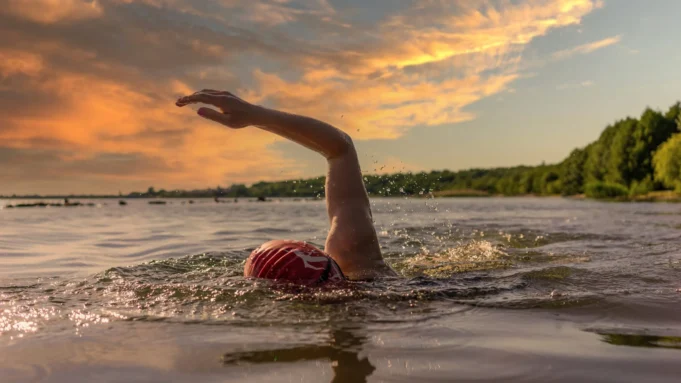Learning to swim is not only a valuable skill but also an essential aspect of personal safety and enjoyment. However, many individuals face significant challenges and fears when it comes to water and swimming. From fear of drowning to water phobia and lack of confidence, these obstacles can seem insurmountable.
The purpose of this blog post is to provide guidance and insights on conquering these fears and gaining proficiency in swimming. By understanding aquatic challenges, building trust and comfort in the water, and developing essential skills, readers can overcome their fears and experience the freedom that swimming brings.
Understanding Aquatic Challenges and Fears
Before delving into strategies for overcoming aquatic challenges, it is important to understand the common fears and obstacles associated with water and swimming. The fear of drowning is perhaps the most prevalent, as water can be a daunting and unfamiliar environment.
Additionally, individuals may struggle with water phobia, an intense and irrational fear of water. Finally, a lack of confidence stemming from past negative experiences or a belief in one’s inability to swim can also hinder progress. Acknowledging and confronting these challenges is the first step toward overcoming them.
Building Trust and Comfort in the Water

To overcome aquatic challenges, it is crucial to build trust and comfort in the water. This involves acclimating to the environment through gradual exposure and relaxation techniques. Starting with shallow water and gradually progressing deeper, individuals can become familiar with the sensations and develop a sense of control.
Techniques such as controlled breathing and visualization can help reduce anxiety and promote relaxation. Enlisting the support of a qualified swimming instructor or coach can provide valuable guidance and reassurance during this process.
Overcoming Fear of Submersion and Breathing
The fear of submersion and difficulties with breath control can be major barriers to learning to swim. Overcoming these challenges requires a gradual and patient approach, coupled with consistent practice. By gradually adapting to submersion and incorporating breath control exercises into swimming sessions, individuals can gradually build confidence and overcome their fears.
With time and practice, the once daunting task of controlling breath while submerged and coordinating it with stroke movements will become more natural and effortless. By focusing on proper technique and maintaining a positive mindset throughout the learning process, individuals can conquer these challenges and experience the joy and freedom of swimming.
Developing Water Confidence and Buoyancy
Developing water confidence and buoyancy is a crucial step toward becoming a proficient swimmer. Floating exercises, such as back floating, can help individuals experience the sensation of being supported by the water. Proper body positioning, including relaxed muscles and controlled breathing, contributes to increased buoyancy and overall comfort in the water. Practicing relaxation techniques and focusing on body awareness can further enhance water confidence.
Learning Basic Water Skills and Techniques
Learning the fundamental water skills is essential for swimming proficiency. This includes floating, kicking, and arm movements. By breaking down these skills into manageable steps and providing step-by-step guidance, individuals can progress at their own pace. For additional help you might even consider swimming lessons Singapore to improve your skills. Repetition, practice, and positive reinforcement play crucial roles in mastering these skills. Celebrating small victories and recognizing progress along the way are vital for maintaining motivation and confidence.
Overcoming Fear of Deep Water and Swimming in Open Water

The fear of deep water and swimming in open water environments can be particularly challenging. However, strategies exist to gradually increase comfort and confidence in these situations. Building on the foundational skills developed in earlier sections, individuals can progressively venture into deeper water under the guidance of a trusted instructor. Transitions from pools to open water require additional safety considerations, including awareness of currents, tides, and weather conditions.
Seeking Professional Guidance and Support
Seeking professional guidance from swimming instructors or coaches is highly beneficial when overcoming aquatic challenges. These experienced professionals possess the knowledge and expertise to create personalized lesson plans that address specific fears and obstacles faced by individuals. With their guidance, structured lessons provide a systematic approach to learning, ensuring a progressive and comprehensive development of swimming skills.
In addition to technical instruction, instructors offer valuable support, encouragement, and motivation, helping individuals navigate setbacks and stay focused on their goals. Their expertise and dedication play a pivotal role in empowering individuals to conquer their aquatic challenges and embark on a transformative journey towards swimming proficiency and water confidence.
Overcoming Setbacks and Frustration
Setbacks and frustration are natural parts of the learning process, and it is important to acknowledge them. Learning to swim is a journey that requires perseverance and determination. When facing obstacles or experiencing setbacks, it is crucial to stay focused on the long-term goal and not get discouraged. Strategies such as setting realistic goals, maintaining a positive mindset, and seeking support from instructors or fellow swimmers can help overcome these challenges.
Developing a Positive Mindset and Self-Belief
Developing a positive mindset and self-belief are instrumental in conquering aquatic challenges. Visualization techniques, where individuals imagine themselves successfully swimming and overcoming their fears, can be powerful tools. Positive affirmations can reinforce confidence and self-belief. Setting realistic goals and celebrating progress, no matter how small, contribute to maintaining a positive mindset throughout the learning process.
Swimming as a Lifelong Skill and Enjoyment

Learning to swim goes beyond conquering fears; it opens doors to lifelong benefits and enjoyment. Swimming provides opportunities for various water-based activities, from leisurely pool sessions to engaging in water sports and exploration. It is a low-impact exercise that improves cardiovascular health, strength, and overall well-being.
Embracing the process of overcoming challenges and developing swimming proficiency leads to the freedom to fully enjoy the water. Moreover, swimming promotes water safety and self-confidence, allowing individuals to participate in aquatic adventures and create lasting memories.
Whether it’s diving into crystal-clear oceans, gliding through serene lakes, or simply floating in a pool on a hot summer day, the ability to swim grants individuals access to a world of aquatic possibilities and enriches their physical and mental well-being.
Conclusion
The journey from fear to freedom in learning to swim is an empowering experience. By acknowledging and confronting aquatic challenges and fears, individuals can build trust and comfort in the water. Gradually overcoming the fear of submersion, developing water confidence and buoyancy, and mastering basic water skills pave the way to swimming proficiency.
Seeking professional guidance and support, overcoming setbacks and frustration, and nurturing a positive mindset are key to success. Ultimately, swimming becomes a lifelong skill and a source of joy and freedom. Take that first step, seek support, and embark on your swimming journey with confidence.















